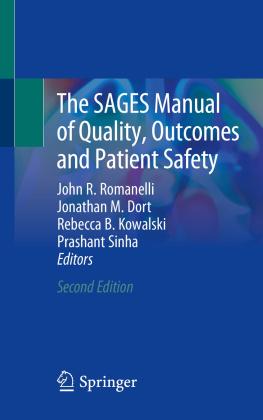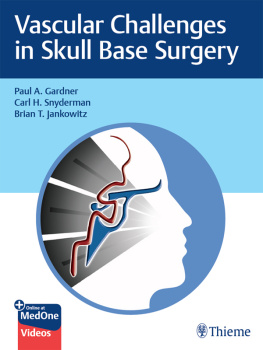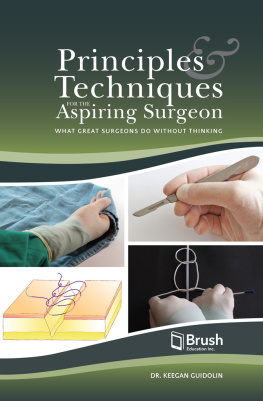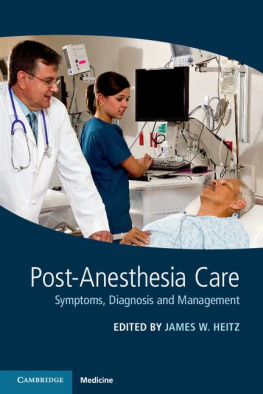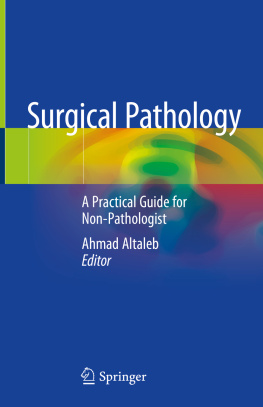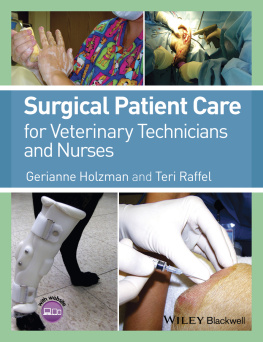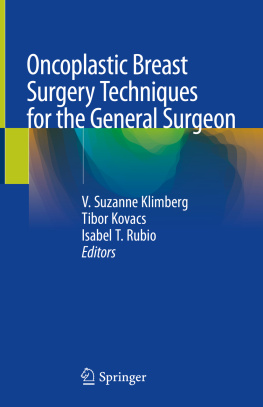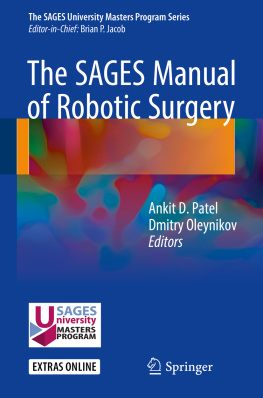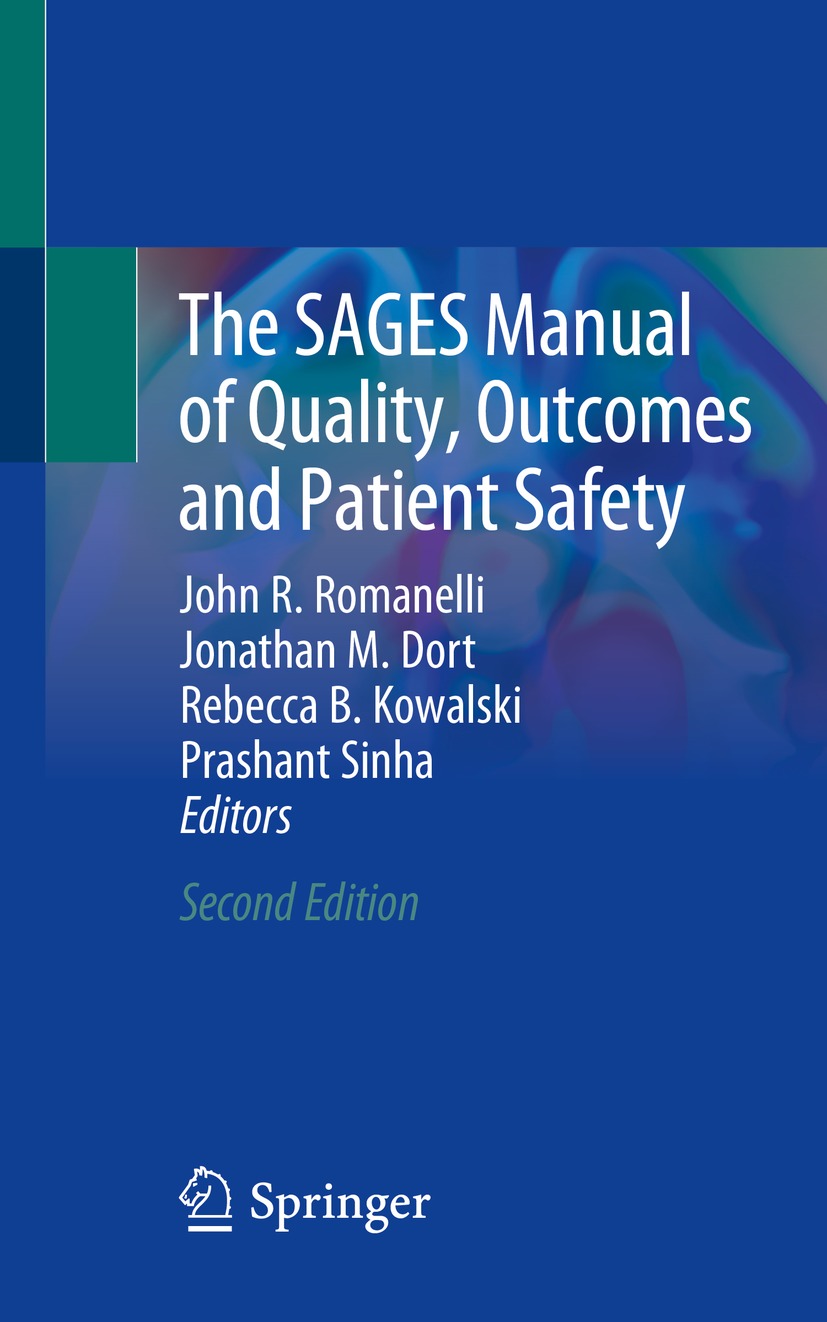Editors
John R. Romanelli
Department of Surgery, University of Massachusetts Chan Medical School - Baystate, Medical Center, Springfield, MA, USA
Jonathan M. Dort
Department of Surgery, Inova Fairfax Medical Campus, Falls Church, VA, USA
Rebecca B. Kowalski
Department of Surgery, Lenox Hill Hospital, New York, NY, USA
Prashant Sinha
Department of Surgery, NYU Langone Medical Center, Brooklyn, NY, USA
ISBN 978-3-030-94609-8 e-ISBN 978-3-030-94610-4
https://doi.org/10.1007/978-3-030-94610-4
SAGES 2022
This work is subject to copyright. All rights are solely and exclusively licensed by the Publisher, whether the whole or part of the material is concerned, specifically the rights of translation, reprinting, reuse of illustrations, recitation, broadcasting, reproduction on microfilms or in any other physical way, and transmission or information storage and retrieval, electronic adaptation, computer software, or by similar or dissimilar methodology now known or hereafter developed.
The use of general descriptive names, registered names, trademarks, service marks, etc. in this publication does not imply, even in the absence of a specific statement, that such names are exempt from the relevant protective laws and regulations and therefore free for general use.
The publisher, the authors, and the editors are safe to assume that the advice and information in this book are believed to be true and accurate at the date of publication. Neither the publisher nor the authors or the editors give a warranty, expressed or implied, with respect to the material contained herein or for any errors or omissions that may have been made. The publisher remains neutral with regard to jurisdictional claims in published maps and institutional affiliations.
This Springer imprint is published by the registered company Springer Nature Switzerland AG
The registered company address is: Gewerbestrasse 11, 6330 Cham, Switzerland
Preface
The idea that we can continually improve our outcomes in the delivery of healthcare is intrinsic in the nomenclature of calling what we do being in practice. The concept of improving quality in the practice of medicine dates back to the nineteenth century. From Ignaz Semmelweis seminal work on handwashing to prevent puerperal sepsis to Florence Nightingale associating high death rates of soldiers in Army hospitals with poor living conditions, physicians and other healthcare providers have often endeavored to find novel ways to improve the delivery of patient care. In surgery, Ernest Codman is credited with the first efforts in quality improvement, recognizing that surgeons could learn from each other and share science to lead to better outcomes for patients, and so he helped found the American College of Surgeons (ACS). Dr. Codman helped to start the Hospital Standardization Program at the ACS, which created and oversaw hospital standards. Today, this is known as the Joint Commission, which is ubiquitous in the healthcare quality arena. He also is the father of implementation of strategies to improve healthcare outcomes. Surgical quality, outcomes, and safety owe a debt of gratitude to this unique surgeon with remarkable foresight over a century ago.
While surgical societies such as ACS or the Society of Thoracic Surgeons (STS) have often led the charge to quality improvement, SAGES, too, has long had a role in this space. SAGES proudly developed the Fundamentals of Laparoscopic Surgery (FLS), the Fundamentals of Endoscopic Surgery (FES), and the Fundamentals of the Use of Safe Energy (FUSE); these programs were borne of the concept of education and accreditation of surgeons as safe for their patients; both FLS and FES are requirements for all graduating surgical residents. The SAGES Quality, Outcomes, and Safety (QOS) Committee was formed as a Task Force on Outcomes in 1997, and it eventually led to the creation of the Outcomes Committee in 2003. This committee was expanded into the QOS Committee in 2008, and it leads the society and its 7000+ surgeons and members as more public attention is devoted to healthcare quality. The first edition of the SAGES Quality, Outcomes, and Safety Manual was groundbreaking as it combined didactic study with expert opinion, venturing outside the clinical arena with important writings on topics such as systems improvement, perioperative safety, error analysis, simulation as an educational tool, team training, and an emphasis on the SAGES Fundamentals programs. Published in 2011, this manual edited by David Tichansky, John Morton, and Daniel B. Jones was one of the first scholarly texts to collect these thoughts into one book, and it was well received by the SAGES membership and surgeons around the world.
Much has transpired in the last decade, and the editors of the second edition of the SAGES Quality, Outcomes, and Safety Manual sought to include these topics for discussion. So, while we sought to keep and update some of the fine work of the first edition, we added new sections that are timely and relevant to the surgeon in practice today. We explored areas of enhanced recovery pathways and the avoidance of postoperative opioid use, as the crisis of the abuse of the drugs is widespread and perhaps preventable to some degree. We examined threats to quality, such as healthcare disparities, disruptive behavior, physician wellness and burnout, physicians as second victims of bad outcomes, ergonomics of surgery, and training new surgeons in the era of work hour limitations. We discussed pathways towards quality, such as mentoring, teleproctoring, training to proficiency, and creating procedural benchmarks. We debated controversial issues such as the use of the robot in minimally invasive surgery, prevention of bile duct injury, super-specialization of general surgery and what it means for patients, and non-clinical concerns such as enforced OR attire and consistent operating room teams. And wherever possible, we highlighted the role that SAGES plays in the quality, outcomes, and safety space.
Lastly, it would be remiss of me personally and professionally not to acknowledge the incredible work of Erin Schwarz. Erin is the administrative staff member who ensures that Quality, Outcomes, and Safety continues its important role in SAGES. A textbook project of this magnitude simply would not be possible without her indefatigable efforts to keep the momentum going to complete this project. Erin is a key member of BSC, who are the framework upon which SAGES thrives. My heartfelt gratitude goes to the whole of BSC, but to Erin, I can only humbly say thank you.
On behalf of my co-editors, Jonathan Dort, Rebecca Kowalski, and Prashant Sinha, I thank you for reading this book and hope it helps you to consider important concepts to improve the care of your surgical patients.
John R. Romanelli
Springfield, MA, USA
Preface
Approximately a decade following the publication of the first edition of this manual, the world of surgery continues to dramatically change. The focus on the quality of care provided by surgeons, the safety of the patients we treat, and the clinical outcomes we see as a result of our care, by both the surgical community and the public, has never been stronger. SAGES remains committed to leading in these areas, and the work and expertise presented in this manual will hopefully serve as a comprehensive resource to all of our SAGES members, as well as to the broader surgical community. This manual covers a wide range of critical topics, from the language and basics of quality, outcomes, and patient safety to education, mentorship, new technologies, and different approaches to care. It is crucial for the care of their patients that surgeons understand all of the elements of how quality is measured, how care outcomes are reviewed, and what the best practices available to them are on how to provide that care. On behalf of the SAGES Quality, Outcomes, and Patient Safety Committee, I am indebted to the time and efforts of the committee members and authors who have helped to create this manual. I also wish to thank my co-editors, John Romanelli, Rebecca Kowalski, and Prashant Sinha, as well as to Erin Schwarz, who has provided all of the administrative support to this endeavor, for all of their hard work in producing this second edition. I hope that you find it to be informative, comprehensive, and useful.

